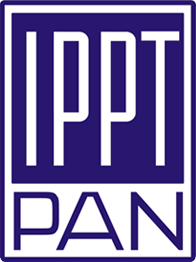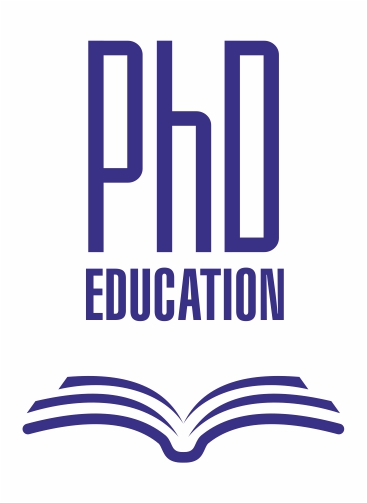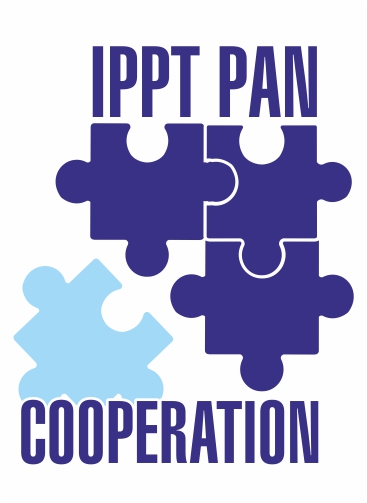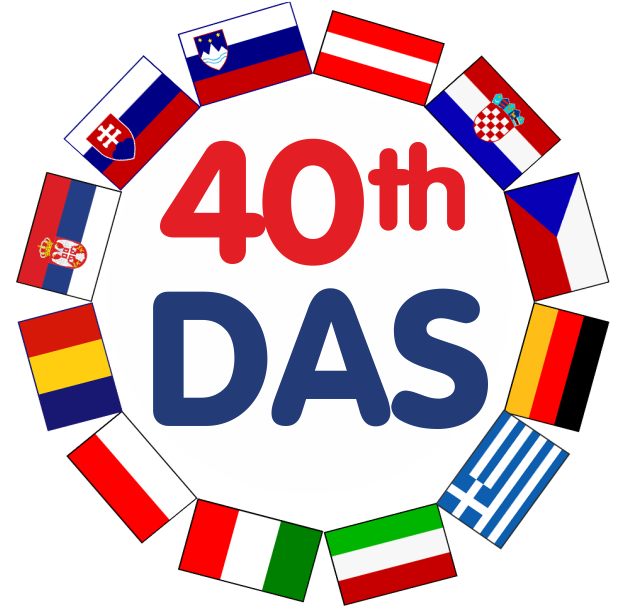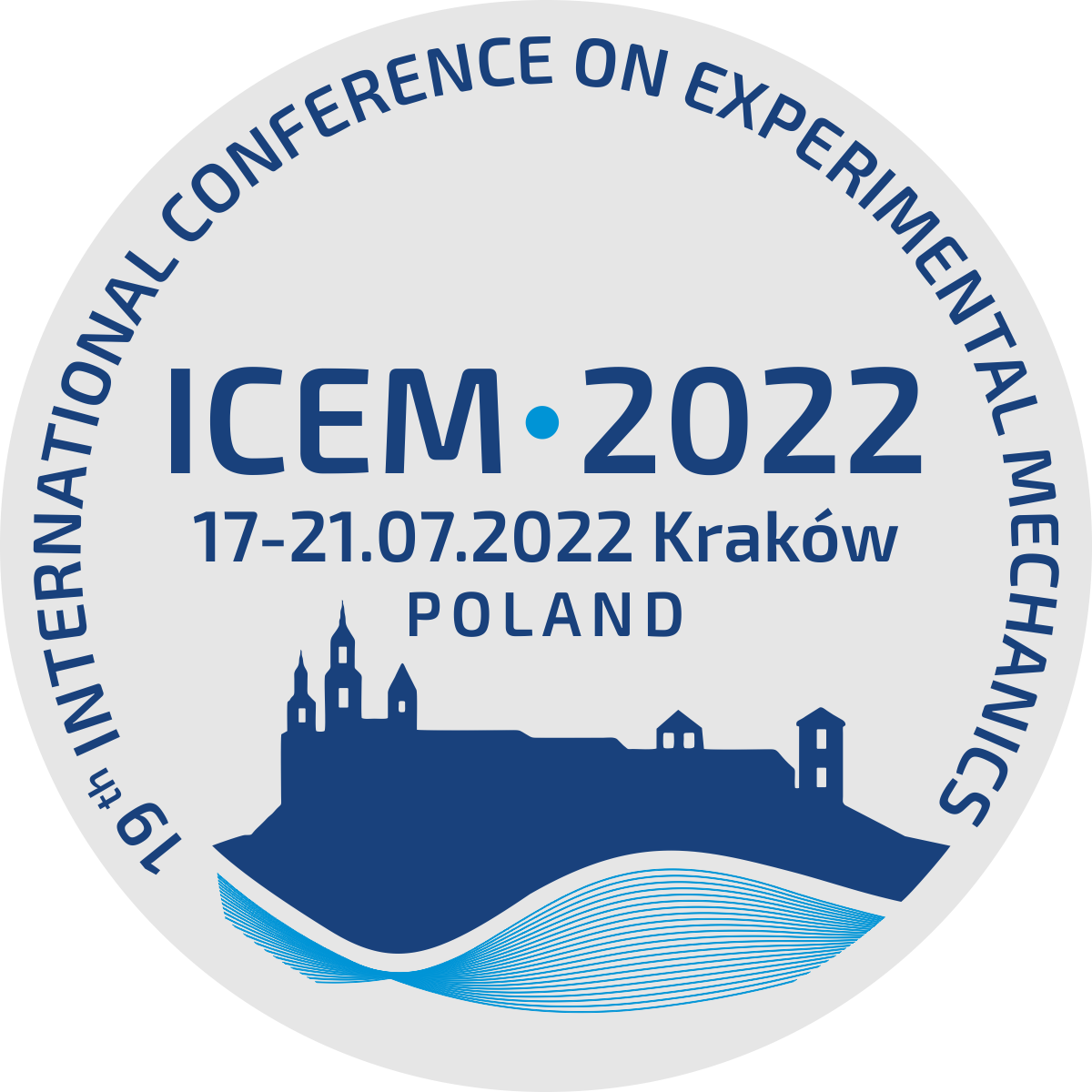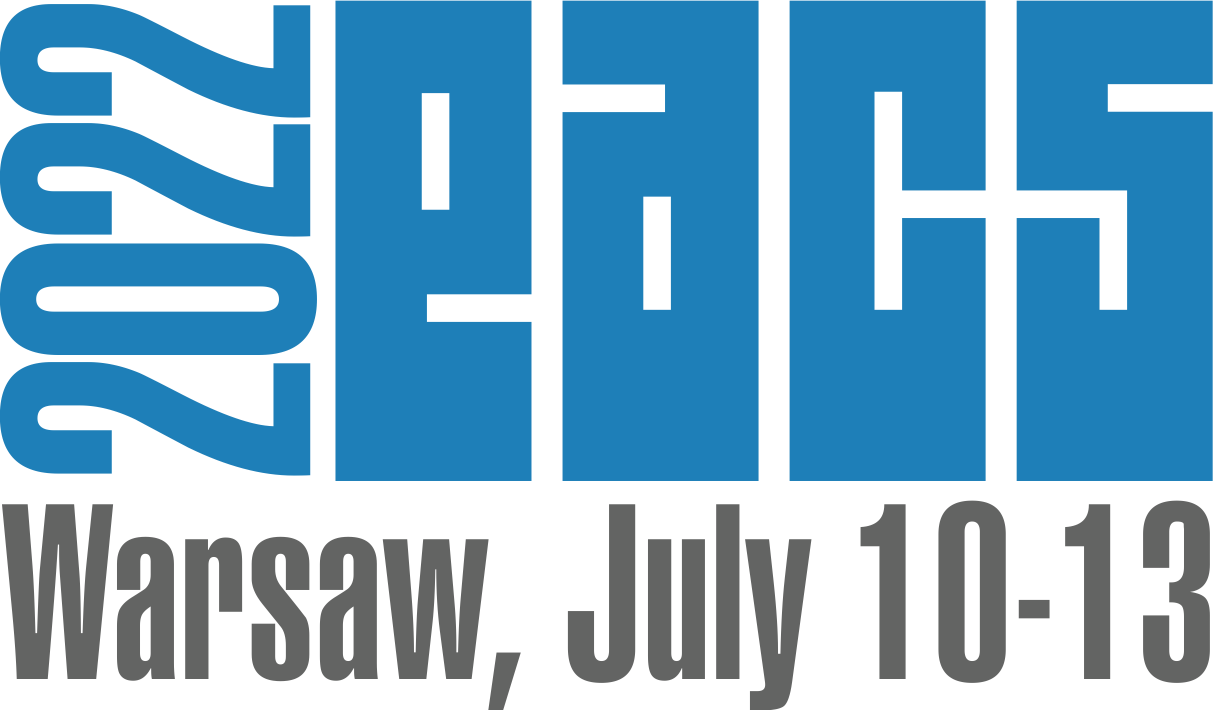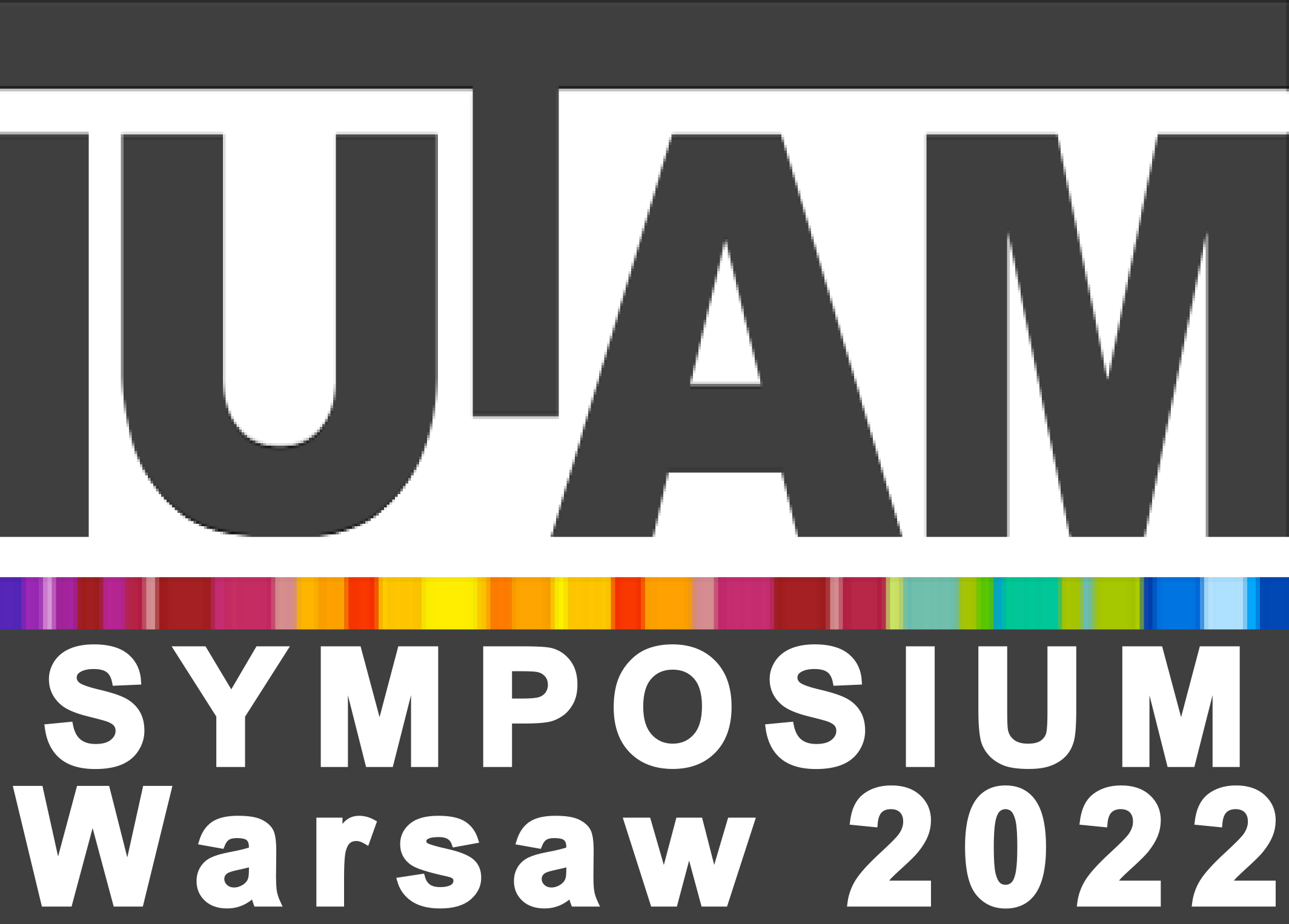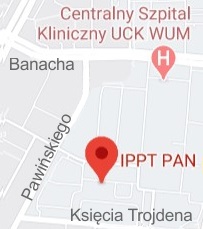| Krzysztof Zembrzycki, MSc |

|
|
Recent publications
| 1. |
Rinoldi C., Ziai Y., Zargarian Seyed S., Nakielski P., Zembrzycki K., Haghighat Bayan Mohammad A., Zakrzewska A., Fiorelli R., Lanzi M.♦, Kostrzewska-Księżyk A.♦, Czajkowski R.♦, Kublik E.♦, Kaczmarek L.♦, Pierini F., In Vivo Chronic Brain Cortex Signal Recording Based on a Soft Conductive Hydrogel Biointerface,
ACS Applied Materials and Interfaces, ISSN: 1944-8244, DOI: 10.1021/acsami.2c17025, Vol.15, No.5, pp.6283-6296, 2023 Abstract: Keywords:
| ||||||||||||||||||||||||||||||||||||||||||||||
| 2. |
Zembrzycki K., Pawłowska S.♦, Pierini F., Kowalewski T.A., Brownian Motion in Optical Tweezers, a Comparison between MD Simulations and Experimental Data in the Ballistic Regime,
Polymers, ISSN: 2073-4360, DOI: 10.3390/polym15030787, Vol.15, No.3, pp.787-1-13, 2023 Abstract: Keywords:
| ||||||||||||||||||||||||||||||||||||||||||||||
| 3. |
Rinoldi C., Lanzi M.♦, Fiorelli R.♦, Nakielski P., Zembrzycki K., Kowalewski T., Urbanek O., Jezierska-Woźniak K.♦, Maksymowicz W.♦, Camposeo A.♦, Bilewicz R.♦, Pisignano D.♦, Sanai N.♦, Pierini F., Pierini F., Three-dimensional printable conductive semi-interpenetrating polymer network hydrogel for neural tissue applications,
BIOMACROMOLECULES, ISSN: 1525-7797, DOI: 10.1021/acs.biomac.1c00524, Vol.22, No.7, pp.3084-3098, 2021 Abstract:
| ||||||||||||||||||||||||||||||||||||||||||||||
| 4. |
Nakielski P., Pawłowska S., Rinoldi C., Ziai Y., De Sio L.♦, Urbanek O., Zembrzycki K., Pruchniewski M.♦, Lanzi M.♦, Salatelli E.♦, Calogero A.♦, Kowalewski T.A., Yarin A.L.♦, Pierini F., Multifunctional platform based on electrospun nanofibers and plasmonic hydrogel: a smart nanostructured pillow for near-Infrared light-driven biomedical applications,
ACS Applied Materials and Interfaces, ISSN: 1944-8244, DOI: 10.1021/acsami.0c13266, Vol.12, No.49, pp.54328-54342, 2020 Abstract: Keywords:
| ||||||||||||||||||||||||||||||||||||||||||||||
| 5. |
Pierini F., Lanzi M.♦, Nakielski P., Pawłowska S., Urbanek O., Zembrzycki K., Kowalewski T.A., Single-Material Organic Solar Cells Based on Electrospun Fullerene-Grafted Polythiophene Nanofibers,
Macromolecules, ISSN: 0024-9297, DOI: 10.1021/acs.macromol.7b00857, Vol.50, No.13, pp.4972-4981, 2017 Abstract:
| ||||||||||||||||||||||||||||||||||||||||||||||
| 6. |
Pawłowska S., Nakielski P., Pierini F., Piechocka I.K., Zembrzycki K., Kowalewski T.A., Lateral migration of electrospun hydrogel nanofilaments in an oscillatory flow,
PLOS ONE, ISSN: 1932-6203, DOI: 10.1371/journal.pone.0187815, Vol.12, No.11, pp.1-21, 2017 Abstract:
| ||||||||||||||||||||||||||||||||||||||||||||||
| 7. |
Stobiecka M.♦, Dworakowska B.♦, Jakieła S.♦, Lukasiak A.♦, Chalupa A.♦, Zembrzycki K., Sensing of survivin mRNA in malignant astrocytes using graphene oxide nanocarrier-supported oligonucleotide molecular beacons,
Sensors and Actuators B: Chemical, ISSN: 0925-4005, DOI: 10.1016/j.snb.2016.04.176, Vol.235, pp.136-145, 2016 Abstract: Keywords:
| ||||||||||||||||||||||||||||||||||||||||||||||
| 8. |
Pierini F., Lanzi M.♦, Nakielski P., Pawłowska S., Zembrzycki K., Kowalewski T.A., Electrospun poly(3-hexylthiophene)/poly(ethylene oxide)/graphene oxide composite nanofibers: effects of graphene oxide reduction,
Polymers for Advanced Technologies, ISSN: 1042-7147, DOI: 10.1002/pat.3816, Vol.27, No.11, pp.1465-1475, 2016 Abstract: Keywords:
| ||||||||||||||||||||||||||||||||||||||||||||||
| 9. |
Pierini F., Zembrzycki K., Nakielski P., Pawłowska S., Kowalewski T.A., Atomic force microscopy combined with optical tweezers (AFM/OT),
MEASUREMENT SCIENCE AND TECHNOLOGY, ISSN: 0957-0233, DOI: 10.1088/0957-0233/27/2/025904, Vol.27, pp.025904-1-11, 2016 Abstract: Keywords:
| ||||||||||||||||||||||||||||||||||||||||||||||
| 10. |
Noszczyk B.H.♦, Kowalczyk T., Łyżniak M.♦, Zembrzycki K., Mikułowski G., Wysocki J.♦, Kawiak J.♦, Pojda Z.♦, Biocompatibility of electrospun human albumin: a pilot study,
Biofabrication, ISSN: 1758-5082, DOI: 10.1088/1758-5090/7/1/015011, Vol.7, pp.015011-1-11, 2015 Abstract: Keywords:
| ||||||||||||||||||||||||||||||||||||||||||||||
| 11. |
Nakielski P., Pawłowska S., Pierini F., Liwińska W.♦, Hejduk P.♦, Zembrzycki K., Zabost E.♦, Kowalewski T.A., Hydrogel nanofilaments via core-shell electrospinning,
PLOS ONE, ISSN: 1932-6203, DOI: 10.1371/journal.pone.0129816, Vol.10, No.6, pp.e0129816-1-16, 2015 Abstract: Keywords:
| ||||||||||||||||||||||||||||||||||||||||||||||
| 12. |
Oliferuk W.♦, Maj M., Zembrzycki K., Determination of the Energy Storage Rate Distribution in the Area of Strain Localization Using Infrared and Visible Imaging,
EXPERIMENTAL MECHANICS, ISSN: 0014-4851, DOI: 10.1007/s11340-013-9819-1, Vol.55, pp.753-760, 2015 Abstract: Keywords:
| ||||||||||||||||||||||||||||||||||||||||||||||
| 13. |
Nakielski P., Kowalczyk T., Zembrzycki K., Kowalewski T.A., Experimental and numerical evaluation of drug release from nanofiber mats to brain tissue,
Journal of Biomedical Materials Research Part B: Applied Biomaterials, ISSN: 1552-4973, DOI: 10.1002/jbm.b.33197, Vol.103B, No.2, pp.282-291, 2015 Abstract: Keywords:
|
List of recent monographs
|
1. |
Zembrzycki K., Pawłowska S., Nakielski P., Pierini F., Development of a hybrid Atomic Force microscope and Optical Tweezers apparatus, IPPT Reports on Fundamental Technological Research, 2, pp.1-58, 2016 |
Conference papers
| 1. |
Zembrzycki K., Kowalewski T.A., Pawłowska S., Chrzanowska-Giżyńska J., Nowak M., Walczak M., Pierini F., Atomic force microscopy combined with optical tweezers (AFM/OT): characterization of micro and nanomaterial interactions,
SPIE Optics + Photonics, 2018-08-21/08-23, San Diego (US), No.10723, pp.1072323-1-6, 2018 Abstract: Keywords:
| ||||||||||||||||||||||
| 2. |
Kowalewski T.A., Nakielski P., Pierini F., Zembrzycki K., Pawłowska S., Micro and nano fluid mechanics,
CMM, 3rd Polish Congress of Mechanics and 21st International Conference on Computer Methods in Mechanics, 2015-09-08/09-11, Gdańsk (PL), pp.27-34, 2016 Abstract:
| ||||||||||||||||||||||
| 3. |
Oliferuk W., Maj M., Zembrzycki K., Distribution of energy storage rate in area of strain localization during tension of austenitic steel,
IOP Conference Series: Materials Science and Engineering, ISSN: 1757-899X, DOI: 10.1088/1757-899X/71/1/012055, Vol.71, pp.012055-1-8, 2015 Abstract: Keywords:
| ||||||||||||||||||||||
| 4. |
Zembrzycki K., Błoński S., Kowalewski T.A., Analysis of wall effect on the process of diffusion of nanoparticles in a microchannel,
JOURNAL OF PHYSICS: CONFERENCE SERIES, ISSN: 1742-6588, DOI: 10.1088/1742-6596/392/1/012014, Vol.392, pp.012014-1-11, 2012 Abstract:
| ||||||||||||||||||||||
| 5. | Lamparska D., Zembrzycki K., Dynamics of nanofibres conveyed by low Reynolds number flow in a microchannel, XIX Krajowa Konferencja Mechaniki Płynów, 2010-09-05/09-09, Poznań (PL), Vol.S19/F, pp.1-5, 2010 |
Conference abstracts
| 1. | Rinoldi C., Ziai Y., Zembrzycki K., Pierini F., CONDUCTIVE HYDROGEL NANOCOMPOSITE-BASED NEURAL INTERFACE FOR IN VIVO RECORDING OF BRAIN CORTEX SIGNALS, TERMIS-EU 2022, Tissue Engineering and Regenerative Medicine International Society European Chapter Conference 2022, 2022-06-28/07-01, Kraków (PL), No.262, pp.1, 2022 | |||||||||||||||||||
| 2. | Rinoldi C., Lanzi M.♦, Fiorelli R.♦, Nakielski P., Zembrzycki K., Kowalewski T.A., Urbanek O., Grippo V.♦, Jezierska-Woźniak K.♦, Maksymowicz W.♦, Camposeo A.♦, Bilewicz R.♦, Pisignano D.♦, Sanai N.♦, Pierini F., Conductive interpenetrating polymer network hydrogel for neural tissue engineering and 3D printing applications, ESB 2021, 31st Annual Conference of the European Society for Biomaterials, 2021-09-05/09-09, Porto (PT), No.PS02-07-224, pp.1691-1692, 2021 | |||||||||||||||||||
| 3. | Pierini F., Nakielski P., Pawłowska S., Rinoldi C., Ziai Y., Urbanek-Świderska O., De Sio L.♦, Calogero A.♦, Lanzi M.♦, Zembrzycki K., Pruchniewski M.♦, Salatelli E.♦, Kowalewski T.A., Yarin A.♦, Nature-inspired smart drug delivery platforms based on electrospun nanofibers and plasmonic hydrogels for near-infrared light-controlled polytherapy, Polymer Connect, Polymer Science and Composite Materials Conference, 2020-02-26/02-28, LISBON (PT), pp.7, 2020 | |||||||||||||||||||
| 4. |
Pawłowska S., Zembrzycki K., Kowalewski T.A., Pierini F., Micro and nano-object interaction analysis with femtonewton resolution by Atomic Force Microscopy and Optical Tweezers hybrid system,
AFM Bio Med Conference, 2019-09-02/09-06, Munster (DE), pp.65-65, 2019 Abstract:
| |||||||||||||||||||
| 5. | Pawłowska S., Pierini F., Nakielski P., Piechocka I.K., Zembrzycki K., Kowalewski T.A., Hydrogel nanofilaments in oscillatory microchannel flow, ISFV 18, 18th International Symposium on Flow Visualization, 2018-06-26/06-29, Zurich (CH), pp.233-235, 2018 | |||||||||||||||||||
| 6. |
Pierini F., Nakielski P., Pawłowska S., Piechocka I.K., Zembrzycki K., Kowalewski T.A., Development and applications of atomic force microscopy combined with optical tweezers (AFM/OT),
AFM BioMed, 8th AFM BioMed Conference, 2017-09-04/09-08, Kraków (PL), pp.103, 2017 Abstract: Keywords:
| |||||||||||||||||||
| 7. |
Pawłowska S., Pierini F., Nakielski P., Piechocka I.K., Zembrzycki K., Kowalewski T.A., Lateral Migration of Highly Deformable Nanofilaments Conveyed by Oscillatory Flow,
CNM, 5th Conference on Nano- and Micromechanics, 2017-07-04/07-06, Wrocław (PL), pp.O-06-29-31, 2017 Keywords:
| |||||||||||||||||||
| 8. | Pawłowska S., Nakielski P., Pierini F., Zembrzycki K., Piechocka I.K., Kowalewski T.A., Tumbling, rotating and coiling of nanofilaments in an oscillating microchannel flow, BioNano6, Biomolecules and Nanostructures 6, 2017-05-10/05-14, Podlesice (PL), Vol.41E, pp.60-60, 2017 | |||||||||||||||||||
| 9. |
Pierini F., Zembrzycki K., Nakielski P., Pawłowska S., Kowalewski T.A., Nanomanipulating and sensing single particles interactions with combined atomic force microscopy optical tweezers (AFM/OT),
MNF 2016, 5th Micro and Nano Flows Conference, 2016-09-11/09-14, Milan (IT), pp.40-41, 2016 Keywords:
| |||||||||||||||||||
| 10. |
Pawłowska S., Nakielski P., Pierini F., Zembrzycki K., Kowalewski T.A., Highly Deformable Hydrogel Nanofilaments in Poiseuille Flow,
MNF 2016, 5th Micro and Nano Flows Conference, 2016-09-11/09-14, Milan (IT), pp.50, 2016 Keywords:
| |||||||||||||||||||
| 11. |
Pierini F., Nakielski P., Pawłowska S., Zembrzycki K., Kowalewski T.A., Particles double layer evaluation by atomic force microscopy - optical tweezers,
ICTAM XXIV, 24th International Congress of Theoretical and Applied Mechanics, 2016-08-21/08-26, Montréal (CA), pp.1204-1205, 2016 Abstract: Keywords:
| |||||||||||||||||||
| 12. |
Pawłowska S., Nakielski P., Pierini F., Zembrzycki K., Kowalewski T.A., Mobility of highly deformable nanofilaments,
ICTAM XXIV, 24th International Congress of Theoretical and Applied Mechanics, 2016-08-21/08-26, Montréal (CA), pp.1196-1197, 2016 Abstract: Keywords:
| |||||||||||||||||||
| 13. |
Pawłowska S., Nakielski P., Pierini F., Zembrzycki K., Kowalewski T.A., Mobility of nanofilaments,
Experiments in Fluid Mechanics 2015, 2015-10-26/10-27, Warszawa (PL), pp.1, 2015 Abstract: Keywords:
| |||||||||||||||||||
| 14. |
Pierini F., Nakielski P., Pawłowska S., Zembrzycki K., Kowalewski T.A., Hydrogel nanofilaments via core-shell electrospinning,
NanoItaly, Nanotechnology meeting forum for research and market, 2015-09-21/09-24, Roma (IT), pp.1, 2015 Abstract: Keywords:
| |||||||||||||||||||
| 15. |
Kowalewski T.A., Nakielski P., Pierini F., Zembrzycki K., Pawłowska S., Nanoscale challenges of fluid mechanics,
PCM-CMM-2015, 3rd Polish Congress of Mechanics and 21st Computer Methods in Mechanics, 2015-09-08/09-11, Gdańsk (PL), pp.11-16, 2015 Abstract: Keywords:
| |||||||||||||||||||
| 16. |
Nakielski P., Pawłowska S., Pierini F., Hejduk P.♦, Zembrzycki K., Kowalewski T.A., Processing and mechanical properties relationships in hydrogel nanofilamets for biological application,
ICMCSF, International Conference on Mechanics of Complex Solids and Fluids, 2015-05-17/05-22, Lille (FR), pp.1, 2015 Keywords:
| |||||||||||||||||||
| 17. |
Nakielski P., Pawłowska S., Pierini F., Hejduk P.♦, Zembrzycki K., Kowalewski T.A., Novel hydrogel nanofilaments based on electrospun core-shell fibers,
Europhysics Conference Biomolecules and Nanostructures 5, 2015-05-13/05-17, Jaroszowice (PL), Vol.39C, pp.101, 2015 Keywords:
| |||||||||||||||||||
| 18. |
Pawłowska S., Nakielski P., Hejduk P.♦, Pierini F., Zembrzycki K., Kowalewski T.A., Brownian motion of nanofibers,
KKNM, 4th National Conference on Nano- and Micromechanics, 2014-07-08/07-10, Wrocław (PL), pp.162-163, 2014 Keywords:
| |||||||||||||||||||
| 19. |
Zembrzycki K., Pierini F., Kowalewski T.A., Optical tweezers to interrogate nano-objects in fluid,
KKNM, 4th National Conference on Nano- and Micromechanics, 2014-07-08/07-10, Wrocław (PL), pp.25-26, 2014 Keywords:
| |||||||||||||||||||
| 20. |
Pawłowska S., Hejduk P.♦, Nakielski P., Pierini F., Zembrzycki K., Kowalewski T.A., Analysis of nanoparticles hydrodynamic diameters in Brownian motion,
XXI FMC, XXI Fluid Mechanics Conference, 2014-06-15/06-18, Kraków (PL), pp.116, 2014 Keywords:
| |||||||||||||||||||
| 21. |
Pierini F., Hejduk P.♦, Nakielski P., Pawłowska S., Zembrzycki K., Kowalewski T.A., Study of surface interaction forces in polystyrene colloidal nanoparticles systems,
XXI FMC, XXI Fluid Mechanics Conference, 2014-06-15/06-18, Kraków (PL), pp.115, 2014 Keywords:
| |||||||||||||||||||
| 22. | Zembrzycki K., Błoński S., Kowalewski T.A., Analysis of wall effect on the process of diffusion of nanopartices in a microchannel, ICTAM XXIII, 23rd International Congress of Theoretical and Applied Mechanics, 2012-08-19/08-24, Beijing (CN), pp.CD-ROM FM10-007, 2012 | |||||||||||||||||||
| 23. | Zembrzycki K., Błoński S., Kowalewski T.A., Analysis of wall effect on the process of diffusion of nanopartices in a microchannel, III National Conference of Nano and Micromechanics, 2012-07-04/07-06, Warszawa (PL), pp.83-84, 2012 |
Patents
|
Filing No./Date Filing Publication |
Autors Title Protection Area, Applicant Name |
Patent Number Date of Grant |
|
|---|---|---|---|
|
446936 2023-11-30 - - |
Adamiec W.♦, Drewa T.♦, Jundziłł A.♦, Kowalczyk T., Kucharska M.♦, Kwieciński P.♦, Meger K.♦, Meger M.♦, Niemczyk-Soczyńska B., Pokrywczyńska M.♦, Tomaszewski W.♦, Urbanek-Świderska O., Zembrzycki K. Proteza do odprowadzenia moczu u pacjentów pozbawionych pęcherza moczowego oraz sposób jej wytwarzania PL, Uniwersytet Mikołaja Kopernika w Toruniu, VET-LAB Brudzew dr Piotr Kwieciński, Sieć Badawcza Łukasiewicz - Łódzki Instytut Technologiczny, Instytut Podstawowych Problemów Techniki PAN, Wytwórnia Sprzętu Medycznego GALMED Katarzyna Meger |
- - - |
|
|
438386 2021-07-08 BUP 02/2023 2023-01-09 |
Pierini F., Zembrzycki K., Pawłowska S.♦, Nakielski P., Nowak M. Detection system based on back-reflected light for focusing the beam in optical tweezers and a method for increasing the precision of measuring the position of the object inside the optical tweezers PL, Instytut Podstawowych Problemów Techniki PAN |
- - - |
|
|
390140 2010-01-07 BUP 15/2011 2011-07-18 |
Kowalewski T.A., Lamparska D., Zembrzycki K., Kowalczyk T., Method for producing mats from nanofibers formed in the electrostatic field PL, Instytut Podstawowych Problemów Techniki PAN |
222733 WUP 08/2016 2016-08-31 |
|
